Representative Image
Investors had a vexing time last year. Rampant inflation was met by central banks racing to hike official interest rates, trashing returns on almost every asset class with the exceptions of gold and other commodities. The key for financial markets in the coming year will be whether policy makers can engineer a soft landing for the global economy, or whether recession becomes endemic. Given how badly the guardians of monetary stability misjudged the post-pandemic environment, we’re sceptical of their ability to concoct a Goldilocks economy. Too much tightening risks serving up cold economic porridge as growth becomes moribund.
Is the Bond Trend at an End?
Since the 1980's, debt yields have been steadily declining. That multi-decade downtrend has clearly been broken, with the average 10-year yield across G-7 bond markets more than doubling last year from the past decade’s mean of 1.3 percent. At current levels, borrowing costs in the debt market are in line with their 20-year average. Your guess is as bad as ours as to what happens next in fixed income.
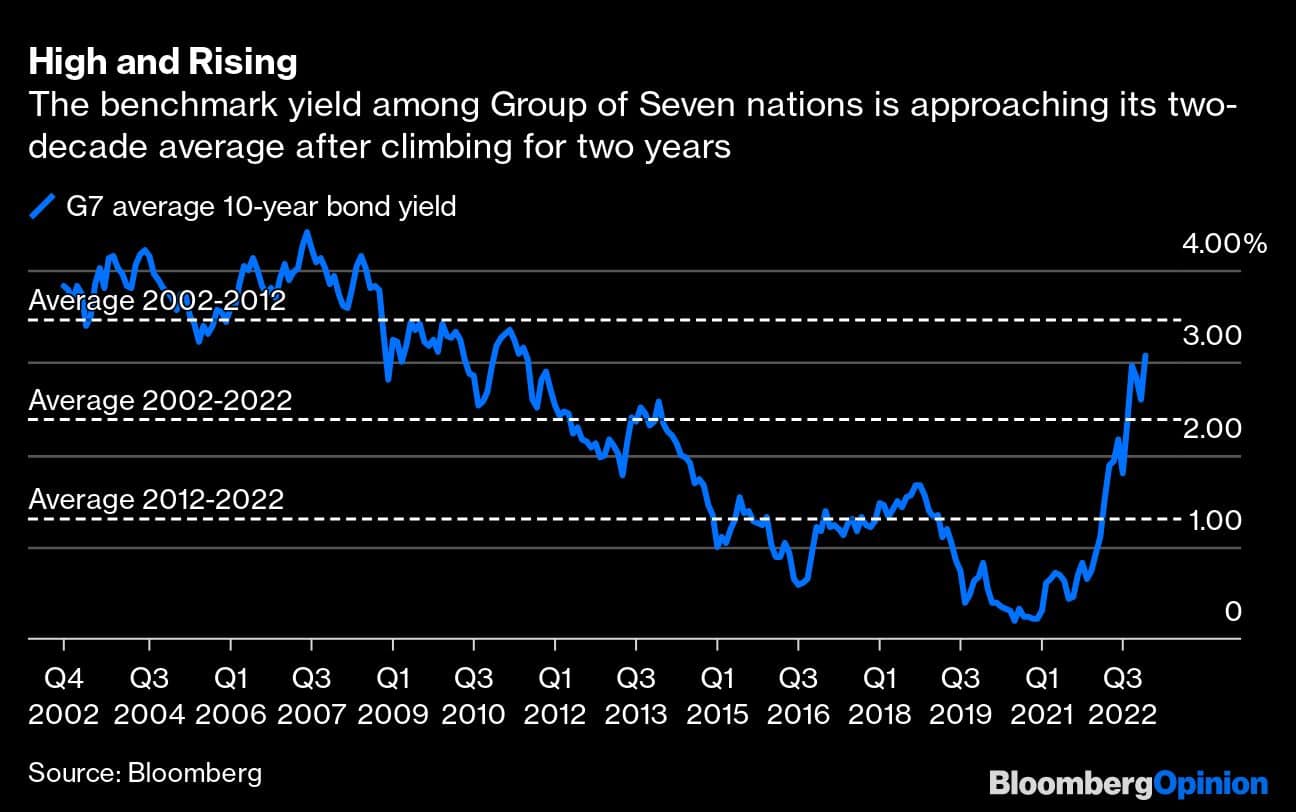
Overly-generous monetary and fiscal stimulus during the pandemic has led to runaway inflation — kryptonite for bonds. US yields, the global benchmark, have blazed the trail towards significantly higher levels. The consensus forecast among economists surveyed by Bloomberg is for 10-year Treasuries to be at 3.5 percent by the end of 2023, little changed from the current level of about 3.85 percent. That strikes us as unlikely; either team transitory wins the day and yields decline, or increased friction in global trade keeps consumer prices and bond yields rising.
Inflation, Inflation Everywhere
The post-pandemic surge in consumer prices has affected all of the world’s economies, encompassing goods and services. And there is no end yet in sight.
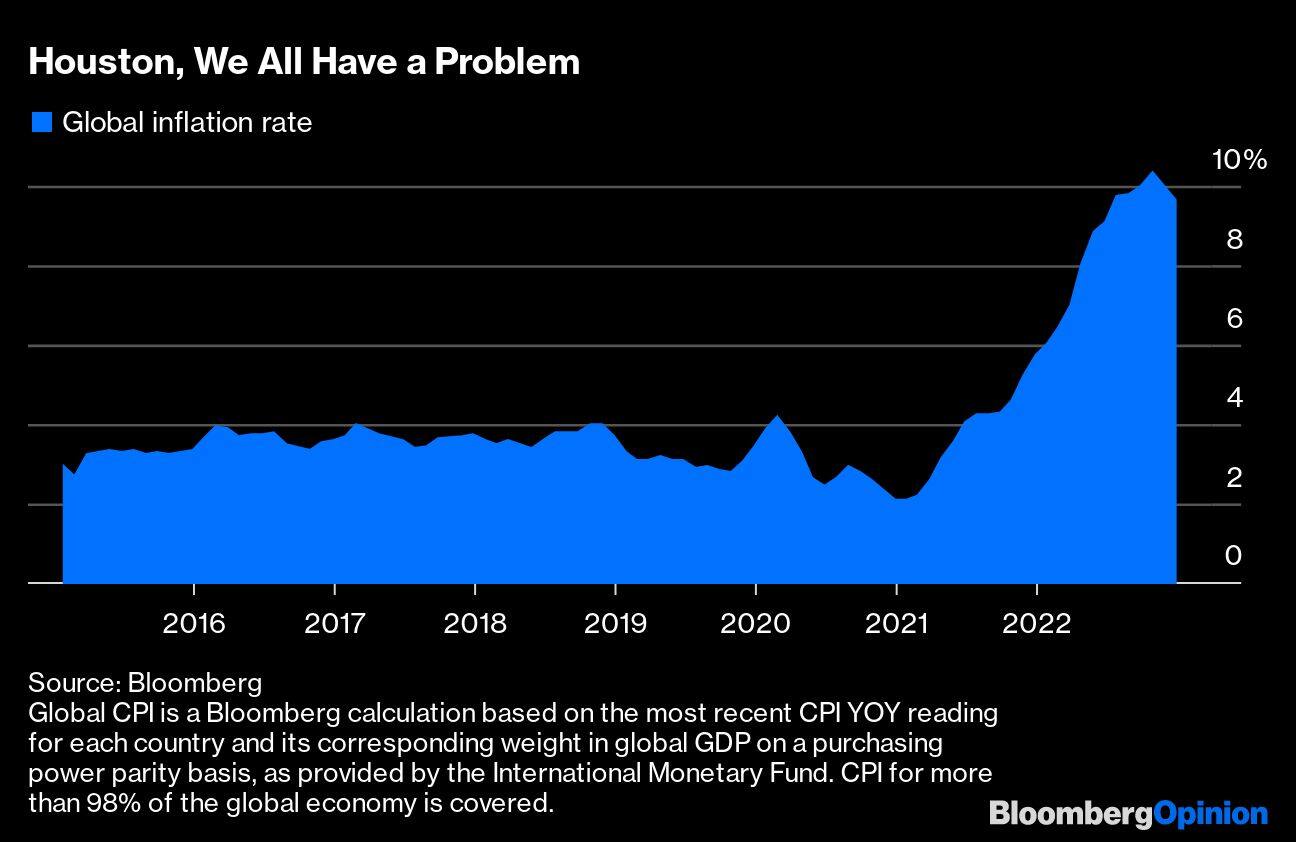
Global inflation had slowed close to 2 percent by the start of 2021. But gargantuan pandemic stimulus programs have combined with an energy shock following Russia’s invasion of Ukraine and the logistical nightmare of supply-chain blockages to produce a fivefold increase in consumer prices. While the pace of central bank rate hikes may moderate in the coming months, the mopping-up operation is far from over. It's getting even trickier as the International Monetary Fund estimates one-third of the world’s economies are either in, or about to fall into, recession. Stagflation looks like the most likely outcome, at least for the first part of this year.
I Owe, I Owe, so Off to Work I Go
Overly-hot wage increases keep central bankers awake at night. This is how inflation expectations get embedded into economic behaviour. It is devilishly hard to prevent a self-perpetuating spiral, where increased living costs lead to ever higher-demands for salary improvements.
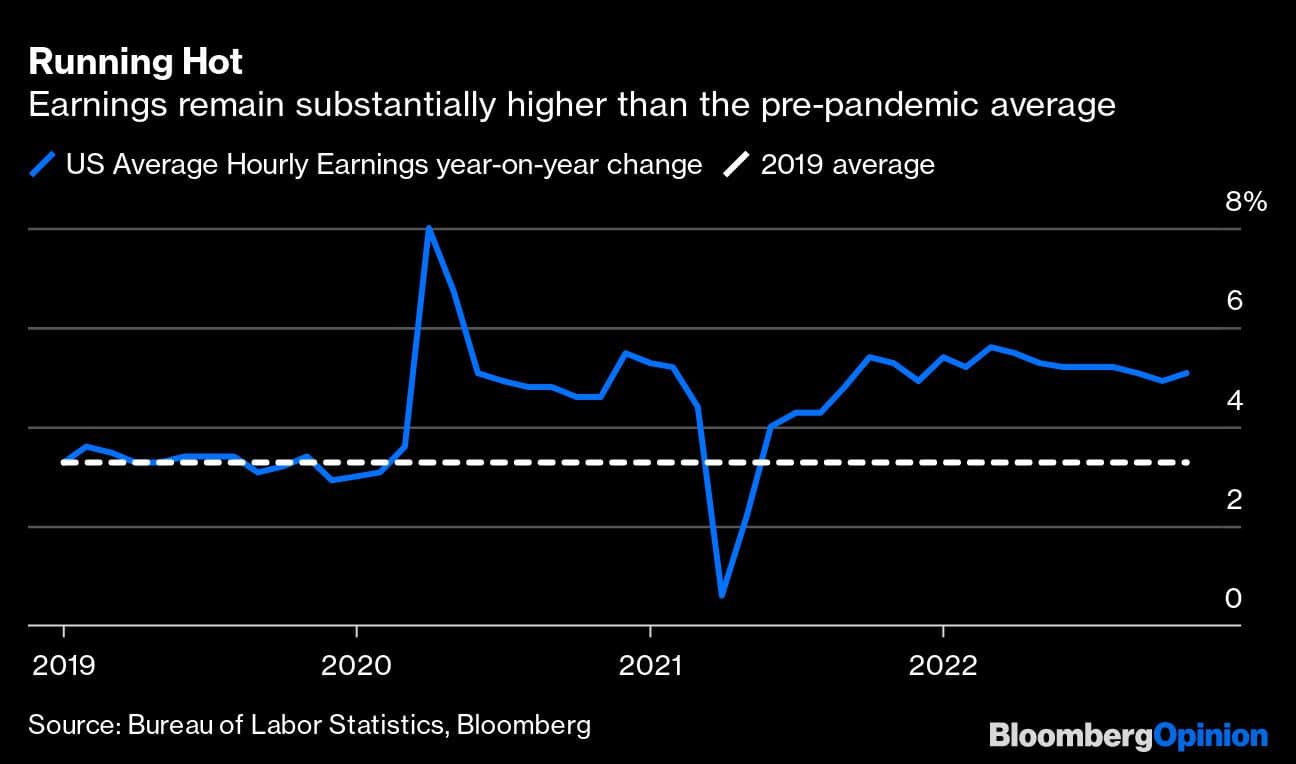
Average hourly earnings can, in normal times, comfortably hover a bit above the Federal Reserve's 2 percent inflation target. But the number has been running at more than 5 percent for over a year. Until this crucial measure comes back under control, the Fed can't stop hiking interest rates. Given that the US central bank effectively dictates how high global interest rates will have to go, the must-watch economic indicator for 2023 will be US labour-market data, specifically on pay.
The Shipping News Improves
The cost of moving goods around the world has nearly returned to pre-pandemic levels, having fallen 80 percent from its peak in September 2021. This offers a welcome logistical respite to supply chains and the accompanying inflation pressure.
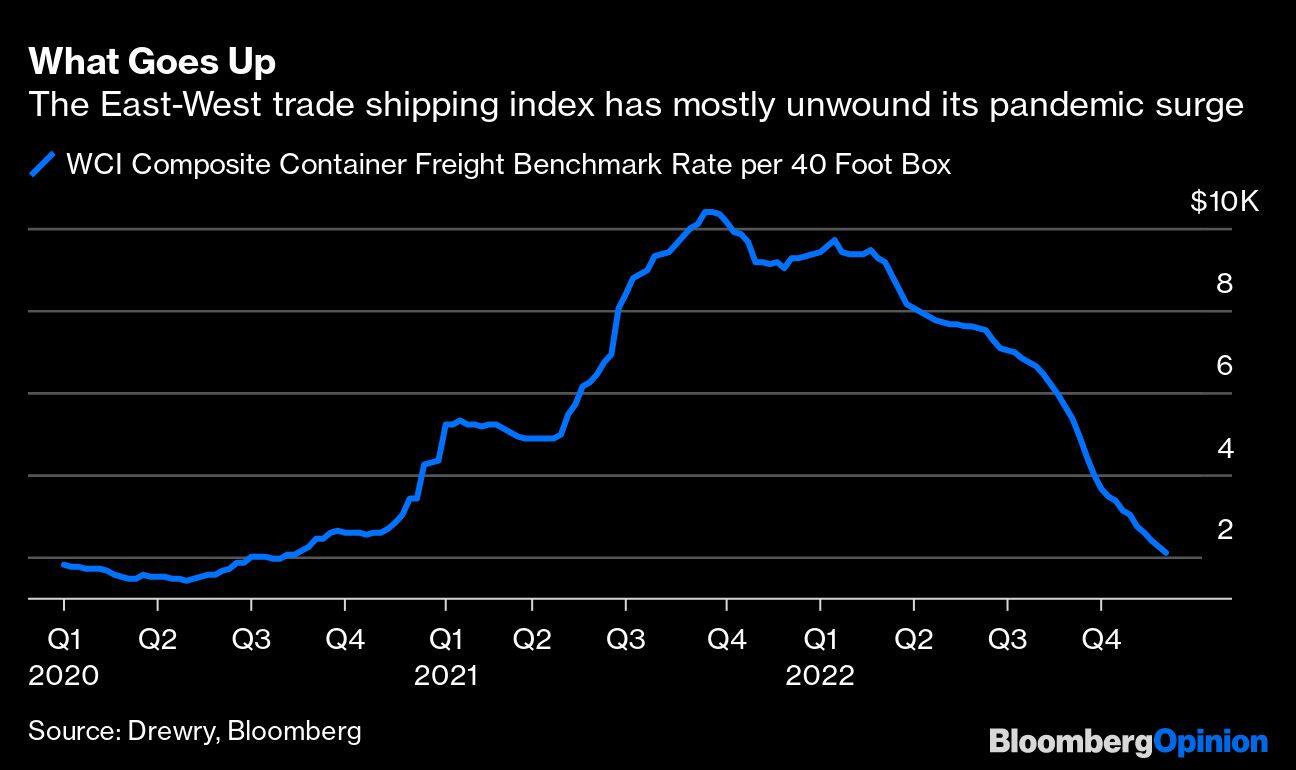
Much of the retracement is down to port delays finally reducing and improved transit times. The broader economic picture, though, is also less favourable, with the delayed reopening of China’s economy from lockdowns and the looming threat of recession in many parts of the world. Longer term, the growing trend of de-globalization, with increased onshoring of manufacturing facilities in the West, may see reduced trade with Asia.
Not So Negative
The universe of negative-yielding bonds has withered as the interest-rate hiking bandwagon picked up speed. Its zenith in early 2021 saw more than $18 trillion of debt offering sub-zero rates. It is now a much more modest $1.1 trillion, as the financial world returns to something more akin to normality as the Alice-Through-the-Looking-Glass era of getting paid to borrow finally ends.
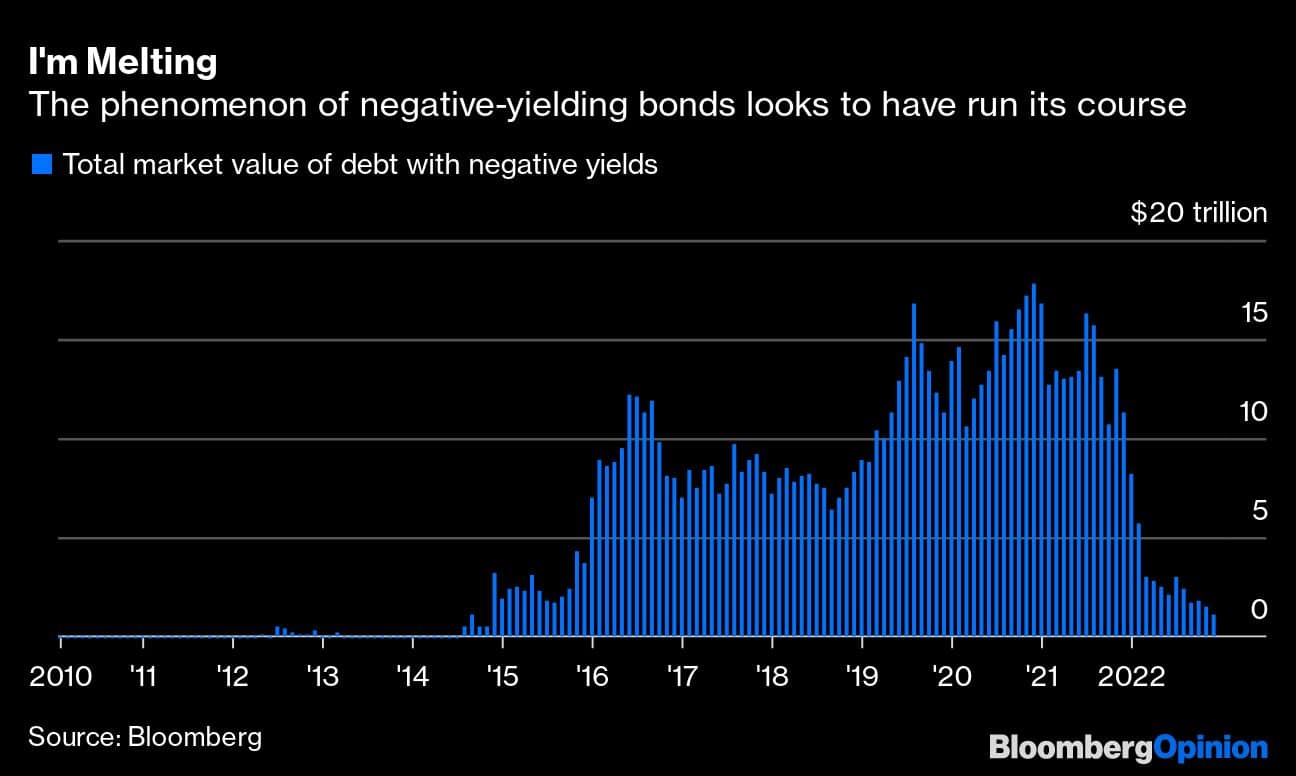
The main suppliers of debt with negative yields in recent years have been core euro zone countries and Japan, with Switzerland playing a minor supporting role. Negative rates across the euro zone have become a thing of the past, even on shorter maturity debt, as the European Central Bank belatedly joined in the rush to raise borrowing costs. German and French 10-year yields are currently at about 2.5 percent and 3 percent, respectively, a significant leap from having been around zero a year ago. Japan remains the outlier, due to its persistence with yield curve control to prevent its 10-year yield exceeding its recently revised ceiling of 0.5 percent. As a consequence, with the Bank of Japan’s official rate still at minus 0.1 percent, only a handful of Japanese government bonds still yield less than zero.
$96,590,717,725,350
That number — $96.6 trillion — is the current global stock market capitalization, down from its peak on Nov. 17, 2021 of $122.5 trillion. This year’s 20 percent decline is the worst since the 47 percent drop in 2008.
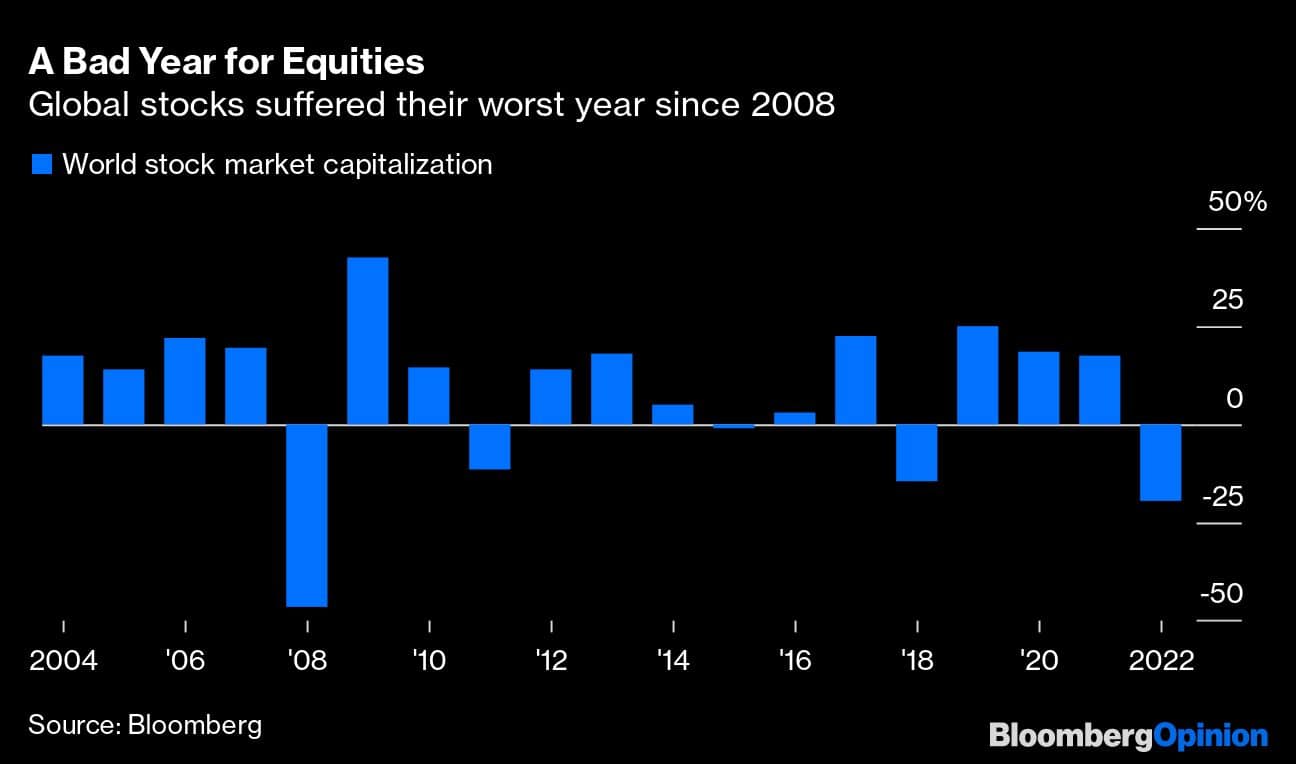
A Bloomberg News survey of 134 fund managers, including BlackRock Inc., Goldman Sachs Asset Management and Amundi SA, suggests investors are anticipating a 10 percent rebound in global equities this year. But 48 percent of participants said stocks could be hurt again by stubbornly high inflation, while 45 percent cited a deep recession as a concern. To summarize: ¯\_(ツ)_/¯
The Robots Are Coming
In August, a technology startup in London called Stability AI made an image-generating model available for general use. Here’s how it interpreted our request to portray a short-haired English blue cat playing guitar (check out those shoulders and hands; creepy doesn’t really cover it):
A few weeks ago ChatGPT, a text-generation system from San Francisco-based OpenAI, took the internet by storm with its ability to write screenplays, poetry, limericks and even computer code. Artificial intelligence and machine learning look set to provide us with more routes into the uncanny valley in the coming months. Maybe someone will come up with a bot that’s better at forecasting the economy than central bank models.
Bitcoin’s Corpse Is Still Twitching
“A scammers’ paradise or digital gold?” we wrote a year ago about the world of cryptocurrencies. “Ponzi schemes or the future of money? The coming year will decide.” The collapse of digital exchange FTX, the arrest of Sam Bankman-Fried on fraud charges and the accompanying evaporation of billions of real-world dollars have, to our minds, settled the question firmly on the side of the skeptics. Bitcoin, the first-among-equals for laser-eyed enthusiasts, languishes below $17,000, after peaking at almost $70,000 a little more than a year ago.
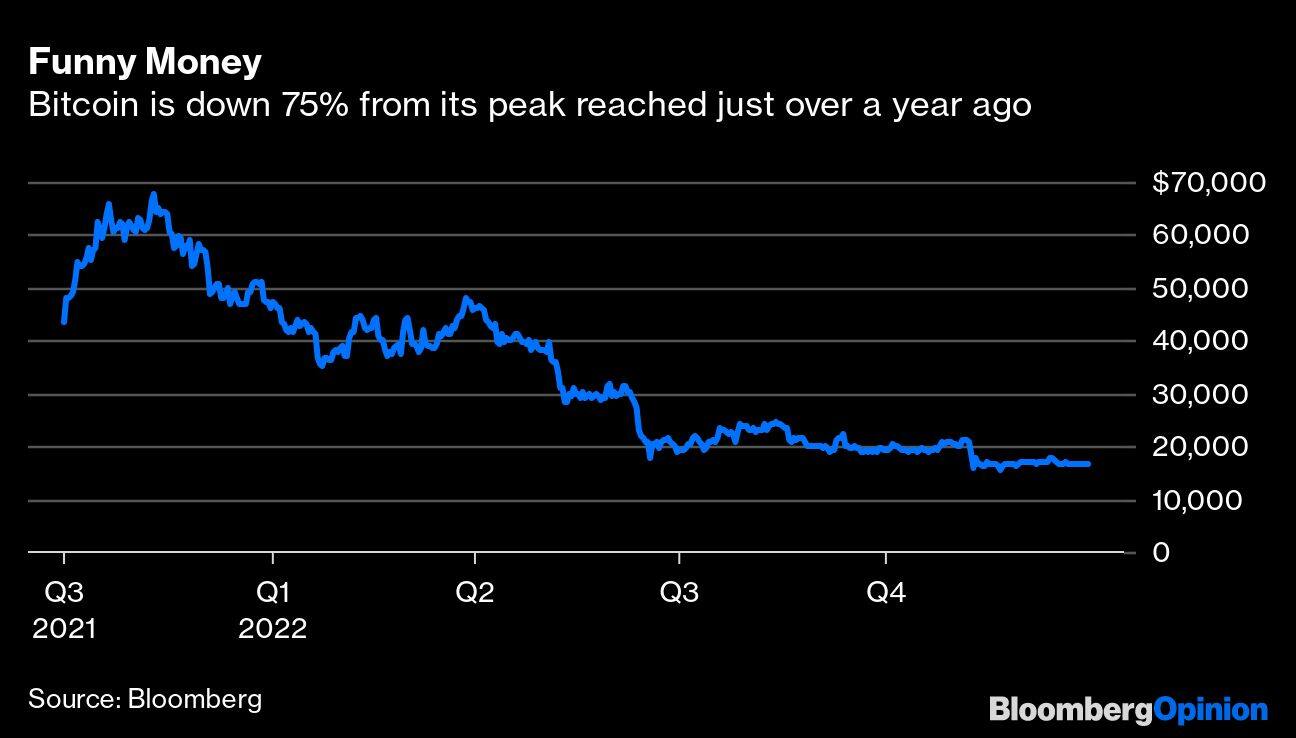
The blockchain technology that underpins decentralized finance remains a solution in search of a problem. Australia’s stock exchange recently abandoned a multi-year effort to switch to a distributed-ledger platform, writing off about $170 million; A.P. Moller-Maersk A/S and International Business Machines Corp. have scrapped a shipping blockchain project called TradeLens that aimed to keep track of goods on vessels. The Bitcoin corpse is still twitching, but we’re with JPMorgan Chase & Co.’s Jamie Dimon: “Pet rocks” was how he described crypto tokens last month.
Marcus Ashworth is a Bloomberg Opinion columnist covering European markets. Mark Gilbert is a Bloomberg Opinion columnist covering asset management. Views are personal and do not represent the stand of this publication.
Credit: Bloomberg